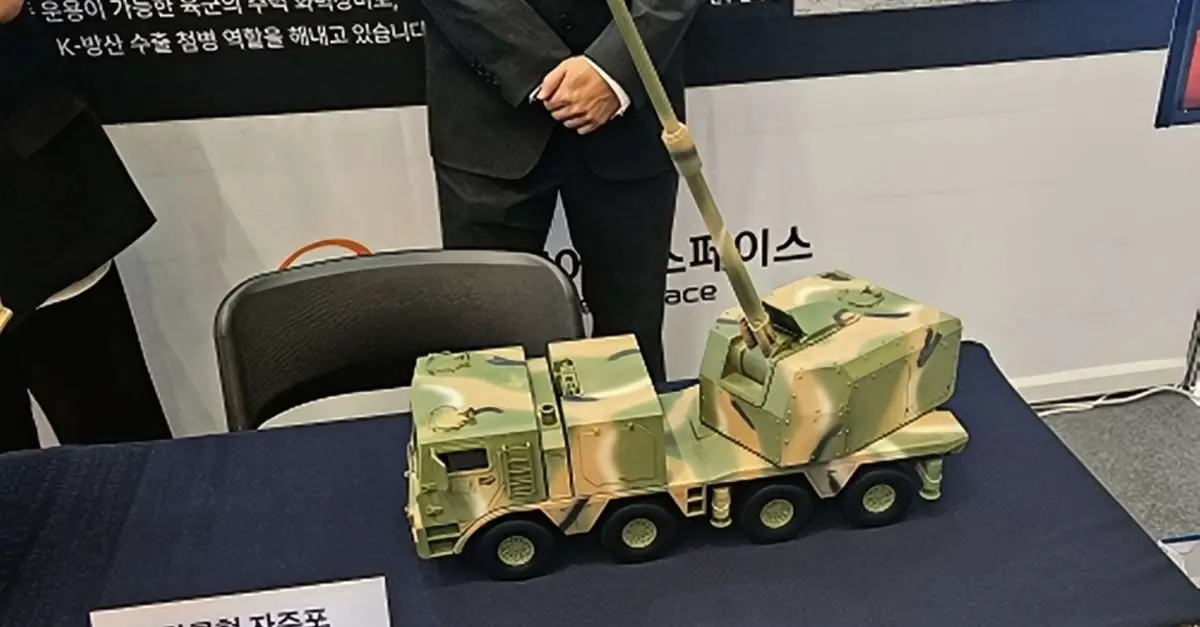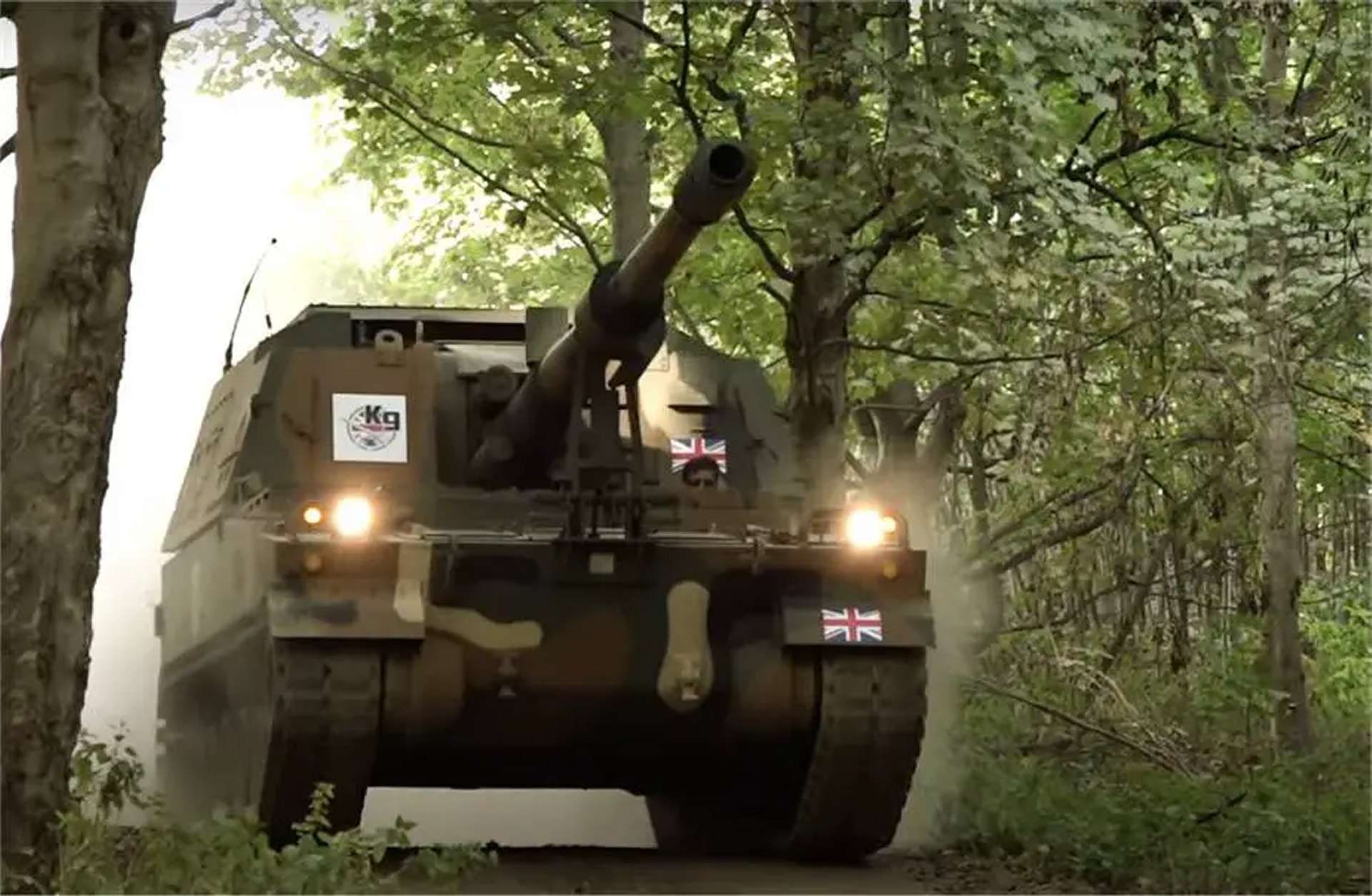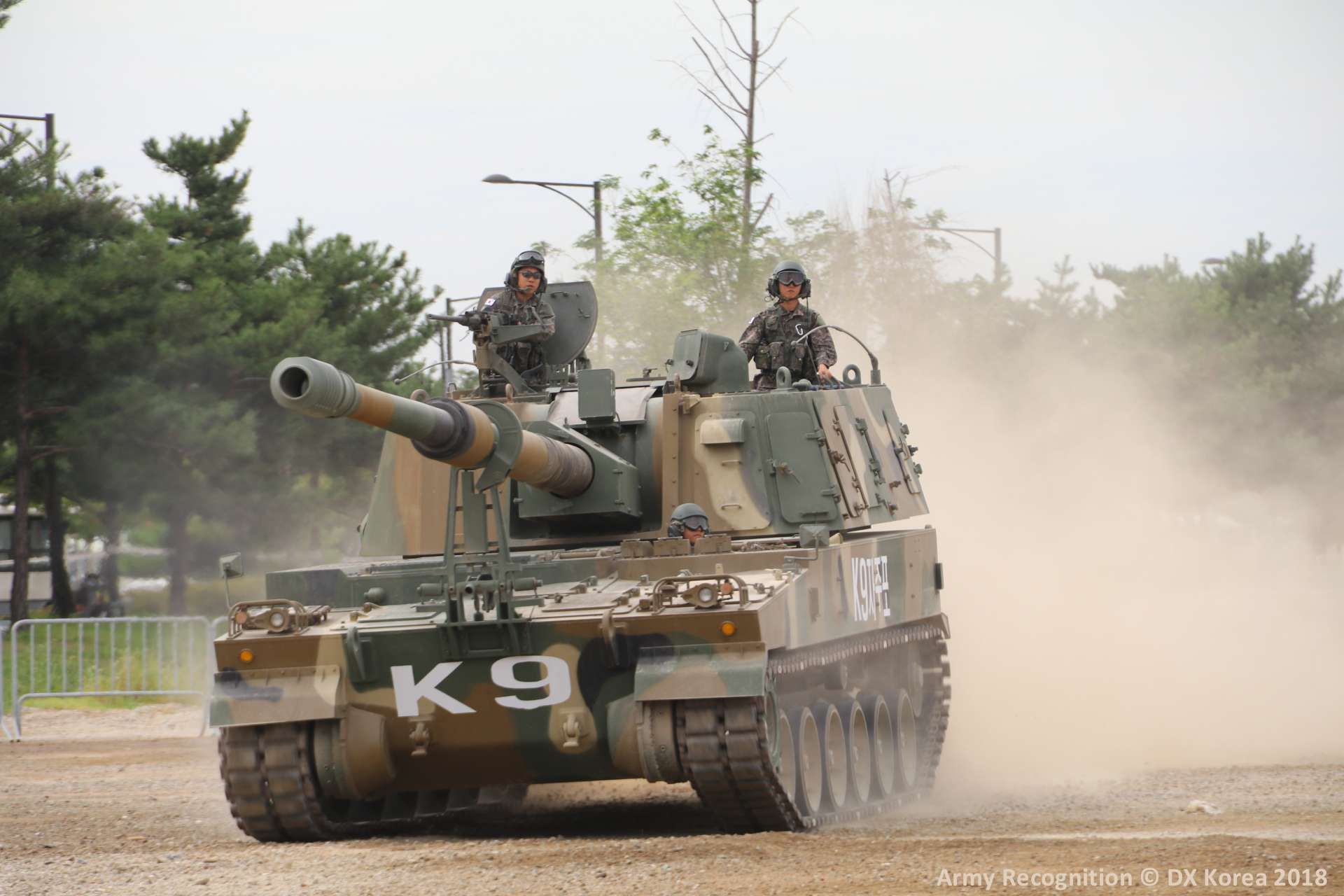Breaking News
Hanwha Aerospace's new 8x8 howitzer promises 70-kilometer strikes to challenge RCH 155 and CAESAr.
As reported by Kim Min-seok on July 23, 2024, Hanwha Aerospace announced the development of a new wheeled 8x8 self-propelled howitzer at the 2024 Defense Quality Comprehensive Academic Conference in Changwon, South Korea. This development represents the introduction of the second South Korean wheeled self-propelled howitzer, following the K105A1, and the first to be entirely developed within South Korea. Initially equipped with a 52-caliber barrel similar to the K9A2, it is planned for future upgrades to a 58-caliber barrel, which may allow precision strikes over a range of 70 kilometers using guided munitions.
Follow Army Recognition on Google News at this link

Hanwha Aerospace's new 8x8 wheeled self-propelled howitzer is designed to compete with existing models such as the RCH 155, French CAESAr MkI and MkII, Israeli ATMOS 2000, and Rheinmetall’s wheeled howitzer, which integrates a 155mm L52 gun with the HX3 10x10 platform. (Picture source: Kim Min-seok)
This model marks Hanwha Aerospace's re-entry into the European defense market after the K9A1/K9A2 was not selected for the latest British self-propelled artillery project. The new wheeled self-propelled howitzer, revealed on July 19, 2024, is designed to compete with existing models such as the RCH 155, French CAESAr MkI and MkII, Israeli ATMOS 2000, and Rheinmetall’s wheeled howitzer, which integrates a 155mm L52 gun with the HX3 10x10 platform.
The British Army's decision to purchase the RCH 155 self-propelled howitzers as part of its Mobile Fires Platform (MFP) program was confirmed during a meeting between UK Prime Minister Rishi Sunak and German Chancellor Olaf Scholz on April 23, 2024. This program aims to replace the aging AS90 Braveheart. The RCH 155 combines the modular Boxer 8×8 chassis with an Artillery Gun Module, featuring a 155mm L/52 gun capable of firing up to nine rounds per minute with a range of up to 54 kilometers using extended-range munitions.
The K9 Thunder, another 155mm self-propelled howitzer by Hanwha Aerospace, currently holds over 50% of the global market share for self-propelled howitzers as of early 2024. Its technical specifications, such as a high firing rate, long-range capabilities, and effective mobility across various terrains, have made it a choice for modernizing artillery systems in various national armies. Romania became the 10th member of the K9 User Club on July 9, 2024, joining other NATO nations such as Türkiye, Poland, Norway, Finland, and Estonia. Romania also became the third global operator of the K10, after Norway and Australia, enhancing its artillery efficiency with automated resupply capabilities.

The K9A2, the latest variant in the K9 family, has demonstrated its capabilities during field trials in the United Kingdom, as part of a program to replace the aging AS90 Braveheart 155mm self-propelled howitzers. (Picture source: Hanwha Defense)
Despite the success of the K9 Thunder, which has seen over 1,800 units produced, Hanwha Aerospace is now addressing the market demand for a more cost-effective and maintainable wheeled variant. The development of this new wheeled self-propelled howitzer follows Hanwha's loss in the British artillery project to the wheeled RCH 155. While the K9's tracked system offers terrain maneuverability and a quick shoot-and-scoot capability to evade enemy fire, tracked systems incur higher maintenance costs and require more personnel for upkeep, along with needing special transport trailers for long-distance movements. In contrast, wheeled systems can travel long distances on roads independently, reducing logistical burdens.
The K9A2, the latest variant in the K9 family, has demonstrated advancements during field trials in the United Kingdom. Equipped with a 155mm/52-caliber cannon, it provides sustained 360-degree firing solutions and can achieve a range of over 40 kilometers with high rates of fire, including Multiple Round Simultaneous Impact (MRSI). It can carry 48 rounds, enhancing its mission capacity. The K9A2 will include Composite Rubber Tracks for improved mobility and automation, allowing it to fire up to 10 rounds per minute with a crew of three members.
Research for the K9A2 is ongoing, with operational deployment expected after 2027. The K9A2 can automatically select the appropriate shell and charge based on target coordinates, utilizing standardized modular charges that can be stacked according to the required range. These new charges are less sensitive to shocks, reducing the risk of accidental explosions. The K9A2's firing rate of nine rounds per minute marks an improvement over the K9A1's six rounds per minute. Unlike the K9A1, which stored ammunition in the vehicle's chassis, the K9A2 stores it upright in the turret, creating additional space in the chassis for amenities such as air conditioning and an automatic fire suppression system.

Despite the success of the K9 Thunder, which has seen over 1,800 units produced, Hanwha Aerospace is now addressing the market demand for a more cost-effective and maintainable wheeled variant. (Picture source: Army Recognition)
The RCH 155's capability to fire while moving and its economic advantages in maintenance were significant factors in its selection, despite its heavier weight. Hanwha’s new wheeled model aims to incorporate these insights, offering similar capabilities with improved cost efficiency. The new wheeled self-propelled howitzer retains the advanced automatic loading system of the K9A2 and can be operated by a crew of two or three. Based on the KTSSM missile launcher chassis, it has demonstrated mobility in both domestic and Middle Eastern operations, indicating its adaptability to various environments.
Hanwha's new turret, designed for modular compatibility, can be mounted on various vehicles beyond the KTSSM, including the Tigon armored vehicle, enhancing its competitiveness in international markets. Currently, the development of this wheeled self-propelled howitzer is funded internally by Hanwha, but the company plans to seek external funding through an upcoming export weapon system development project. Success in this venture could significantly impact Hanwha Aerospace's position in the global defense market, potentially mirroring the impact of the AS21 Redback.

Hanwha's new turret, designed for modular compatibility, can be mounted on various vehicles beyond the KTSSM, including the Tigon armored vehicle, enhancing its competitiveness in international markets. (Picture source: Army Recognition)
Hanwha Aerospace's new 8x8 self-propelled howitzer presents several potential advantages compared to existing models of wheeled self-propelled howitzers. The planned upgrade to a 58-caliber barrel may allow it to achieve a range of over 70 kilometers with guided munitions, exceeding the maximum ranges of several competing models, such as the CAESAr Mark II, which reach about 55 kilometers with rocket-assisted projectiles.
This howitzer includes advanced automated loading systems similar to those used in the K9A2 variant, enabling operation by a smaller crew of two or three members, thereby reducing the complexity and personnel requirements, comparable to the Rheinmetall howitzer which also features high automation. The new howitzer's integration with the KTSSM missile launcher chassis demonstrates its adaptability to different operational environments, potentially offering logistical and tactical flexibility.
Moreover, Hanwha's new turret is designed for modular compatibility, like the AGM 155 found on the RCH 155, allowing it to be mounted on various vehicles beyond its primary chassis, which could benefit interoperability and ease of integration with different military systems. This modularity can be advantageous in international markets where countries have varying vehicle requirements, like the ATMOS 2000.


























